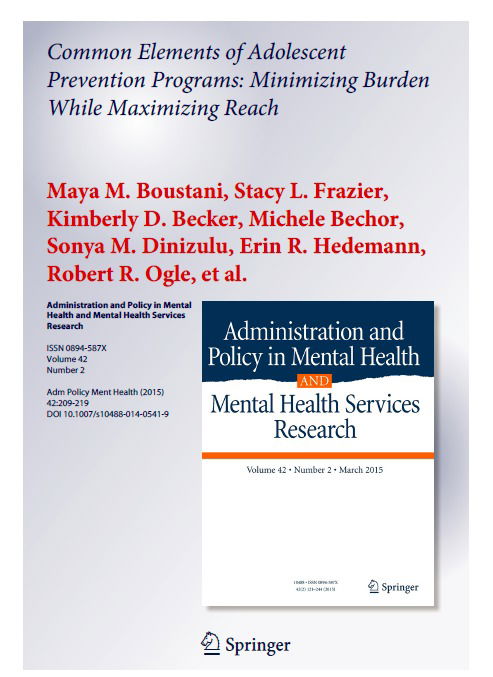Common elements of adolescent prevention programming: Minimizing burden while maximizing the reach.

Abstract A growing number of evidence-based youth prevention programs are available, but challenges related to dissemination and implementation limit their reach and impact. The current review identifies common elements across evidence-based prevention programs focused on the promotion of health-related outcomes in adolescents. We reviewed and coded descriptions of the programs for common practice and instructional elements. Problem solving emerged as the most common practice element, followed by communication skills, and insight building. Psychoeducation, modeling, and role play emerged as the most common instructional elements. In light of significant comorbidity in poor outcomes for youth, and corresponding overlap in their underlying skills deficits, we propose that synthesizing the prevention literature using a common elements approach has the potential to yield novel information and inform prevention programming to minimize burden and maximize reach and impact for youth.
Full text available here: Boustani et al (2015). Common elements of adolescent prevention



